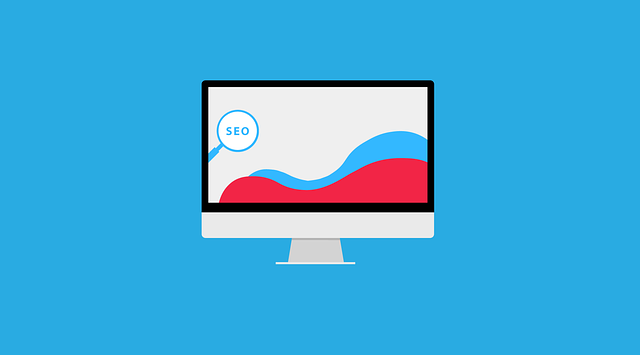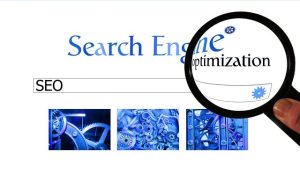SEO web design is a strategic approach that goes beyond aesthetics to boost online presence and user engagement. It involves integrating SEO techniques throughout website elements, focusing on keyword research, structured content creation, and metadata use. Headings, alt tags, internal linking, mobile responsiveness, and fast loading times enhance the user experience, aligning with search engine priorities like Google's. In today's digital era, effective SEO web design is crucial for business success, ensuring visibility, relevance, and competitiveness in the online marketplace.
In today’s digital landscape, a robust SEO web design strategy is paramount for online success. This comprehensive guide explores the intricate relationship between Search Engine Optimization (SEO) and web design, offering a detailed overview of how these elements intertwine to drive organic traffic and enhance user experiences. From understanding foundational concepts to delving into technical optimizations and content strategies, we equip you with insights to create high-performing, SEO-focused websites that resonate with modern audiences.
Understanding SEO Web Design: A Comprehensive Overview

SEO web design is more than just creating visually appealing websites; it’s an art and science focused on enhancing online visibility and user experience. At its core, SEO web design involves strategically integrating search engine optimization (SEO) techniques into every element of a website to improve its ranking in search engine results pages (SERPs). This means crafting content that resonates with users while also being optimized for relevant keywords and phrases that potential customers are searching for.
A comprehensive SEO web design approach starts with keyword research to identify the terms your target audience uses when searching online. It continues with structured content creation, ensuring each page has a clear hierarchy and meaningful metadata. This is further enhanced through effective use of headings, alt tags for images, and internal linking strategies that guide users and search engines alike through the website’s information architecture. Additionally, optimizing for mobile responsiveness and loading speed is paramount to providing an exceptional user experience, which search engines like Google prioritize.
The Role of SEO in Modern Web Design Strategies

In today’s digital landscape, the intersection of SEO web design has become paramount for businesses aiming to thrive online. Effective SEO strategies are no longer merely a nice-to-have; they’re a necessity. By integrating search engine optimization principles into web design, developers can create user-friendly interfaces that not only capture the attention of visitors but also capture higher rankings on search engine result pages (SERPs). This dual benefit ensures that online platforms are not just popular but also easily discoverable by potential customers or users.
Modern SEO web design goes beyond mere keyword stuffing and meta tag optimization. It involves thoughtful architecture, strategic content placement, and responsive design to cater to a diverse range of devices and screen sizes. These practices enhance both the user experience (UX) and search engine visibility, reflecting the current trend in the industry. As online competition intensifies, embracing SEO web design is crucial for staying relevant, visible, and competitive in the digital marketplace.
Key Principles of Effective SEO-Optimized Websites

When crafting an SEO web design, several key principles stand as cornerstones for maximizing online visibility and user engagement. Firstly, keyword research is paramount; understanding your target audience’s search queries allows for strategic content creation and placement. Integrate these keywords naturally throughout your website’s content, meta tags, and URLs to enhance search engine comprehension.
Secondly, user experience (UX) plays a pivotal role. A well-structured site with intuitive navigation, rapid loading times, and mobile responsiveness not only caters to users’ expectations but also signals to search engines the high quality and value of your online presence. Additionally, regular content updates and optimization keep your website fresh, encouraging frequent visits and improving SEO rankings over time.
Technical Aspects: Enhancing Website Performance for SEO

In the realm of SEO web design, technical aspects play a pivotal role in enhancing website performance and visibility on search engines. Optimizing site speed is one such critical factor. Fast-loading pages not only improve user experience but also signal to search algorithms that your site is reliable and worth ranking higher. Techniques like code compression, leveraging browser caching, and optimizing images can significantly reduce page load times.
Moreover, ensuring mobile responsiveness is essential for modern SEO strategies. With the majority of internet traffic coming from mobile devices, a website that adapts seamlessly to different screen sizes demonstrates versatility and care for its audience. Search engines prioritize mobile-friendly sites in their rankings, making this an indispensable component of effective SEO web design solutions.
Content Creation and SEO: A Synergistic Relationship

In the realm of SEO web design, content creation and optimization go hand in hand, forming a synergistic relationship that significantly enhances online visibility. High-quality, keyword-rich content is not just essential for engaging users; it also serves as a cornerstone for search engine algorithms. By strategically integrating relevant keywords into well-crafted copy, meta tags, and headings, SEO web design solutions ensure that websites resonate both with audiences and search engines. This duality drives organic traffic, improves user experience, and ultimately boosts conversions.
Effective content creation for SEO involves a deep understanding of target demographics and the intricate dance between providing valuable information and adhering to search engine guidelines. When implemented correctly, this approach not only attracts but also retains visitors, signaling to search engines that the website is authoritative and relevant. As a result, search engines reward such websites with higher rankings, making them more accessible to potential customers in today’s digital landscape.
On-Page Optimization Techniques for Better Search Rankings

In the realm of SEO web design, on-page optimization is a powerful tool for boosting search rankings. It involves refining various elements within a webpage to increase its relevance and appeal to both users and search engine algorithms. Techniques such as keyword research and strategic placement are fundamental. By identifying and incorporating relevant keywords naturally throughout content, meta tags, and headings, websites can signal to search engines what their pages are about.
Additionally, on-page optimization encompasses improving page load speed, ensuring mobile-friendliness, and creating high-quality, engaging content. Optimizing images with alt text and structuring content with a clear hierarchy also plays a significant role. These practices not only enhance the user experience but also encourage search engines to rank pages higher, driving more organic traffic to the website.
Off-Page SEO: Building Authority and Backlinks

Off-page SEO is a strategic approach that focuses on enhancing your website’s authority and visibility beyond your site itself. It involves building high-quality backlinks from reputable sources, which act as votes of confidence for search engines. When other credible websites link to yours, it signals to search algorithms that your content is valuable and trustworthy. This, in turn, boosts your SEO web design efforts by improving your website’s ranking on search engine results pages (SERPs).
Building backlinks requires a thoughtful strategy. It involves reaching out to influential blogs, industry leaders, or relevant websites in your niche to request a link exchange or partnership opportunities. Creating engaging content that naturally attracts links is another effective method. This could include comprehensive guides, infographics, or research-backed articles that other sites are eager to link to and share with their audience. By implementing these off-page SEO tactics, you can significantly strengthen the foundation of your SEO web design strategy.
Mobile Optimization and Its Impact on SEO Web Design

In today’s digital era, mobile optimization is no longer an option but a necessity for any robust SEO web design strategy. With a vast majority of internet users accessing websites through their smartphones and tablets, search engines prioritize mobile-friendly sites in their rankings. This shift is driven by the desire to provide users with seamless and accessible experiences across all devices, ensuring fast loading times, responsive layouts, and touch-friendly interfaces.
A well-optimized mobile site not only improves user satisfaction but also enhances SEO performance. Mobile-first indexing allows search engines to crawl and index content from the mobile version of a website, which can lead to better visibility in mobile search results. Additionally, mobile optimization helps reduce bounce rates, increases time spent on-site, and encourages conversions, all of which are positive signals that contribute to higher rankings and increased organic traffic for SEO web design efforts.
Measuring Success: Analyzing SEO Web Design Results

Measuring success is a critical aspect of any SEO web design strategy. It involves analyzing key performance indicators (KPIs) to understand the effectiveness of implemented tactics. By tracking metrics such as organic traffic, keyword rankings, bounce rates, and conversion rates, designers and marketers can gauge the impact of their efforts on user engagement and business goals. These insights enable data-driven decisions, allowing for continuous improvement and optimization of the SEO web design.
Regularly evaluating these results is essential to stay ahead in a dynamic digital landscape. Tools like Google Analytics play a pivotal role in this process by providing comprehensive data on website performance. Armed with this information, professionals can identify areas that need enhancement, whether it’s refining content strategies, improving site speed, or restructuring the user experience to ensure the SEO web design remains competitive and delivers tangible results.
